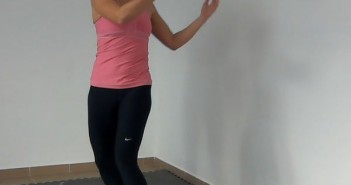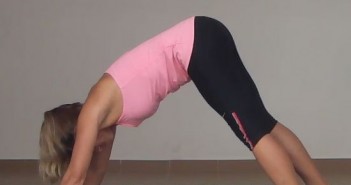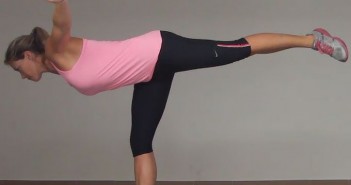The backwards slap shot may seem a little trivial, it’s a “trick” shot that you’re not going to use very often.
Indeed, even when you get the opportunity to use it, this shot may not be the wisest choice – you’d often be better advised to take your medicine and take a penalty drop, rather than risk this shot for an uncertain reward.
If you’re a “sensible” golfer, you may see this shot played and regard it as reckless, and a sure sign of a misspent youth, a bit like someone who can juggle a golf ball with a wedge.
But therein lies an important issue. Being a good golfer is about a lot more than swing mechanics, it also involves touch and imagination, having a feel for the game.
Feel and imagination on the golf course aren’t something that is gifted to a select group of talented golfers, they’re something that is learned.
And the best way to learn them: playfulness!
Experiment, try new things, “mess around” and have some fun in practice. This isn’t about perfecting any given “trick” shot, though you will certainly have a laugh and develop a few skills that you can show off to your buddies, it’s about elevating your skill levels, your vision, your hand-eye coordination – about being a better all-round golfer.
And it just so happens that the backwards slap can be a pretty versatile shot, and a useful tool to have in your bag. For example:
- When the ball is close to a tree, rocks or other immovable obstruction that prevents you from addressing the ball normally.
- When the ball is well above your feet, there’s trouble left, and a normal shot would be both difficult and risky.
- From the water’s edge, when you’d rather not risk taking a dip.
- From the grass on the back edge of a steep-sided bunker, where a normal shot is almost impossible.
If the backwards slap shot offers you a good stance, then you should consider it as an option any time that you can’t take your normal stance, or when a normal shot is too difficult.
You’ll need to practise this shot (“mess around with it”) before you can get a feel for how the ball will come off your clubface, for direction, carry and roll, but it’s really not difficult.
How to Hit the Backwards Slap Shot
As always, apologies to the lefties out there, but for simplicity we’ll describe movements for the right-handed golfer.
Figure 1. Damage Control: The Backwards Slap Save.
- Start with a wedge – this shot is easier with a bit more loft and a broader club face – but after a little practice you could easily use a 7-iron.
- Take the club in your right hand and grip down on the club, it’s easier to control a shorter shaft.
- Address the ball with feet close together and your right arm hanging vertically, and the club facing behind you, resting on its toe.
- Place your left hand on your right shoulder – this will help you to keep your shoulder still, to anchor it, and provide a stable pivot point for the swing.
- Take a few practice swings, trying to scuff the ground just after where the ball will be.
- Turn your back to the target and play the ball about 6” (15cm) outside, and just ahead of, your right foot – this will enable you to see the ball and to contact it cleanly, without scuffing the ground before impact.
- Make your swing by bending your arm at the elbow, lifting the club in front of you, keeping your upper arm and body quiet, and hinge your wrist just a little.
- Strike the ball by straightening your arm, slapping the ball. Be sure to accelerate through impact, keeping your hand ahead of the club and not allowing it to “flip”.
The movement is an up and down slap, using your triceps to extend your arm and swing the club down.
With a little practice, you’ll be able to hit the ball quite a long way by making longer swings, using your upper arm too. When you do this, be sure to initiate the downswing by first pulling your elbow back down beside you and then straightening your arm.
Choose your play wisely. It’s difficult to play this shot with any precision, and we wouldn’t recommend trying it from a poor lie. Aim towards safety and give yourself room for error.
With practice, this can be an effective tool for avoiding a penalty stroke and getting the ball back in play, and sometimes even for chipping it close enough to give yourself a chance of saving par.
Happy fairways!

» Play Like a Champion – Escaping from trouble.



